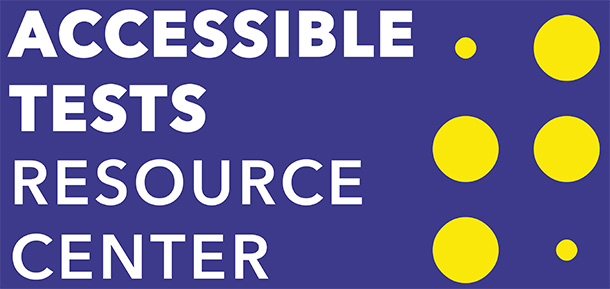Go to navigation for Accessible Tests Resource Center
Position Paper: Appendix D: Use of an Abacus in Test-Taking Situations
The following position paper on “Use of an Abacus in Test-Taking Situations” has been taken from the 4th edition of TEST ACCESS: Making Tests Accessible for Students with Visual Impairments: A Guide for Test Publishers, Test Developers, and State Assessment Personnel (July, 2009) prepared by Carol B. Allman, Ph.D. and published by the American Printing House for the Blind, Louisville, Kentucky.
By Terrie Terlau and Fred Gissoni
Definition and Description
The mathematical abacus is a frame with beads or balls that ca be slid on wires or in slots for calculating or teaching arithmetic (The American Heritage Dictionary of the English Language, 1996). The abacus has been used as a calculation device in Europe, Japan, China, and the Middle East since the third century A.D. It continues to be used widely in Japan (http://www.syuzan.net/english/education/education.html).

The Cranmer abacus was developed as a calculation device for persons who are blind or visually impaired and is currently produced by the American Printing House for the Blind (APH: Abacuses, 2001). The Cranmer abacus frame is made of high impact plastic, measures 6-1/8 X 3-1/4 X 7/16 inches, and contains thirteen vertical rods and one horizontal cross bar. Four beads can be moved vertically on each of the thirteen roads below the cross bar and one bead can be moved vertically along the roads above the cross bar.
Abacus Functionality
When calculating with the Cranmer abacus, vertical rods represent units, tens, hundreds, etc. Numbers are recorded and manipulated by moving beads toward the cross bar on their respective rods.
The abacus is a passive device. It is not a calculator or a slide rule. The abacus does not perform mathematical operations. It does not contain information that would enable an abacus user to achieve calculation results without a solid knowledge of mathematical concepts and relationships. Abacus users produce calculations as a result of their understanding of the behavior of numbers, not because of any inherent property of the abacus.
Both abacus and pencil-and-paper users must learn strategies for performing mathematical operations. The primary difference in the activity of abacus and pencil-and-paper users is that pencil-and-paper users apply and record steps in these operations by writing while abacus users apply and record these processes by moving abacus beads.
Persons who are blind or visually impaired and who have had appropriate abacus instruction can use the abacus to perform addition, subtraction, multiplication, division, and square and cube roots. The abacus does not permit permanent storage of problem solutions because beads must be rearranged to perform subsequent problems. After each calculation using an abacus, answers can be recorded in a variety of formats including braille, large print, voice recording, word processing, or dictation into an electronic device.
Position Statement
Whenever a test-taker is allowed to use a pencil and paper for working calculations, an abacus should be considered an equivalent substitution.
References
APH: Abacuses. (2001). Retrieved August 6, 2008 from http://archive.aph.org/tests/abacuses.htm
The American Heritage Dictionary of the English Language (3rd edition).
The League of Japan Abacus Associations. (2001). Soroban in education and modern Japanese society. Retrieved August 1, 2008, from http://www.syuzan.net/english/education/education.html


